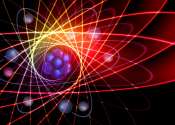Creating frequency combs in microresonators
For the first time, scientists were able to create ultrashort dark and bright light pulses that are linked together in tiny glass rings called microresonators. Each of the flashes consist of many different, precisely defined ...









